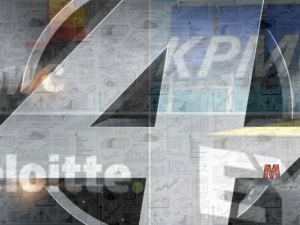
Brazilian football has always been a kind of symbiosis: the beauty and attractiveness of the sport are linked to associative models and their various aspects. It has always been mutually beneficial as clubs live in a parallel reality for decades on end. They did not undergo inspections, were not appropriately taxed, evaded, and did not fulfill their obligations, and all this mess did not result in any significant problems.
Making football was relatively cheap until the 70s, and with the lack of control and supervision, no elements put Brazilian football at risk. Brazilian football dominated the industry in several aspects, with the best players, winning more cups than other countries, and having very competitive teams and a strong and feared National team.
Almost all experts in the football industry in Brazil attribute the Pelé Law to the inflection point of Brazilian football regarding its domain and the beginning of the club’s insolvency process.
They think that the end of the infinite control over the rights of athletes has completely changed the distribution of power, impoverishing clubs and making them hostage to players and agents, putting them at the mercy of the economic power of European teams. A good part of this submission to European teams is due to the exchange rate, which persists until now with the Real super devalued.
I consider this, at best, myopia.
I seriously suspect this narrative is used as a smokescreen to take the focus off countless activities outside of football that consume millions and millions and bring no return.
In Brazil, we express this: “putting a goat in the living room”. I searched for the English equivalent but didn’t find anything suitable. The central idea is the absurdity of having a goat in the middle of your living room, diverting the focus from all the real problems around you.
My reading of the decline of Brazilian football is quite different and contradicts the version propagated by associative models and their experts.
Football began to get more expensive in that first wave of purchases from players worldwide for Italian football. Much more money began to enter Brazilian clubs, and expenses grew.
Sales are extraordinary income. In most cases, expenses are recurring expenses tied to medium and long-term contracts.
The acquisition boom spread to other leagues even before the enactment of the Pelé Law in 1998. It’s okay that the Law implodes the abusive ballast that clubs had on players’ federative and economic rights, but this leads us to think that it is just the icing on the cake that had already been deflated.
We also created the “Clube dos 13” in 1987, positively impacting TV rights. Again, more money coming in, more spending. It always works like this in 99.9% of clubs.
The TV rights are current income, but as more was spent than was collected, we started to observe the infamous advance of this revenue. It was a snowball, with many sinister behind-the-scenes stories, like currency indexing, abusive interest rates, and weird debt confessions.
Before the Pelé Law, clubs had already built their time bombs. This Law is that an unlucky guy in a slapstick movie will try to defuse the bomb and ends up accelerating the countdown. But the Law has great merit, and as it ended an extremely abusive control over athletes’ rights, it was no exaggeration to compare it to a modern form of slavery.
Collecting data on the club’s financials and balance sheets from that era is useless. And deadly for anyone suffering from any type of allergy.
The financial statements of football clubs began to be audited on a mandatory basis only in 2006, if memory serves me correctly. As a result, the clubs go through the first significant program to redeem their debts, at that time predominantly in public affairs. We have the adhesion to TIMEMANIA and absolute proof that all those balance sheets, and annual reports, informed, voted, and approved by associative models and their councils, had millions and millions in omitted liabilities (not recognized/recorded in the balance sheets).
Just consult the debt consolidation statements at adhesion, composed of taxes and fiscal years of origin, to see how this process of calculating balances, results, and approvals never served any purpose.
Relying on these audited balance sheets as of 2006 is also highly complicated, as I hope you will notice in future editions of this newsletter (already published in Portuguese).
At this point, much more was spent than collected. And the expense was not even entirely aimed at football. Social and Olympic activities consumed much of the surplus generated in the soccer market. Backoffice expenses were still incipient, even though few managers were already paid well above the market average.
The wave of “professionalization” of management, with an increase of millions a year in Backoffice activities, comes in the wake of the implosion of “Clube dos 13”. TV rights and sign-in bonuses show a colossal growth in the clubs’ revenues. As I’ve been writing, more money, more spending. Much more money? Total financial mess regarding operational deficits.
Thus, the symbiosis changed the relationship between football and the model. We started to observe parasitism. Associative models that are increasingly greedy and costly are increasingly withdrawing resources from football.
It’s not much use just talking about this topic. You must come up with numbers, compare clubs, and show what’s happening worldwide. Associative models are harmful to any football club anywhere on the planet.



